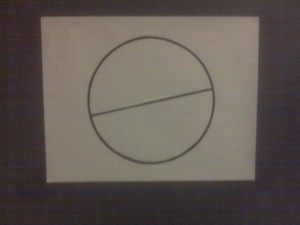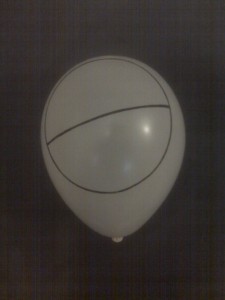Physicist: Scientists can generally answer “medium complicated” questions. The really hard ones are too damn hard, and the really simple ones are often “just the way things are”. Or they may be really, really difficult questions in disguise. You’ve found one of the fundamental questions that no one seems to have a good answer for. We also don’t know why the mass, , we use when talking about inertia (as in
) is the same as the mass we use when talking about gravity (as in
). The best theory I’ve ever heard is that matter is actually made of bunched up “knots” of space-time, and even that isn’t a terribly good a theory.
The second half of your question we do have an answer for, it’s just a little mind bending and hard to picture. What heavy objects are bending is space itself. The way you detect space (follow me here) is with rulers or stretched out strings, or stuff like that. Anything that measures distance. Near heavy objects the distance between points is greater than you would expect, and you can use this fact to detect and measure the stretching of space.
The usual trick when trying to picture higher dimensional space is to knock off a couple of dimensions, and picture that instead. 3 dimensions is too complicated, and 1 is stupid, so here’s 2!

A circle and its diameter in flat space. Here D=6.5'', C=20.4'', and 20.4/6.5=3.13 ≈π.

A circle and its diameter in curved space. Here D=7.2'', C=20.4'', and 20.4/7.2=2.83<π
Take the circumference, , and the diameter,
. You’ll notice that on paper (flat space)
. Which makes sense, since that’s the definition of
. However, on the balloon (curved space)
, since the diameter is longer. This effect is huge (infinite) for things like black holes, but for an object like the Earth the effect is tiny (ignore the hell out of it). The stretching of space caused by the Earth’s gravity (well… that is Earth’s gravity) increases the diameter of the Earth by about 18mm.
That is, the diameter you get by measuring the equator and dividing by (
) is the “flat space diameter”, the diameter you get by physically dropping a rope through the planet is the true, “curved space diameter”, and the difference between these two is 18mm.







76 Responses to Q: Why do heavy objects bend space and what is it they are bending?